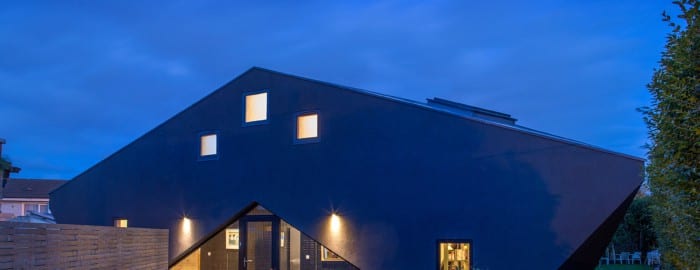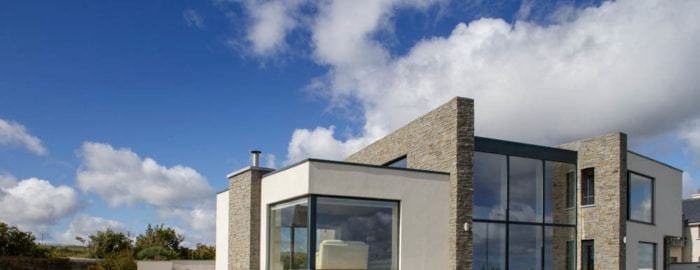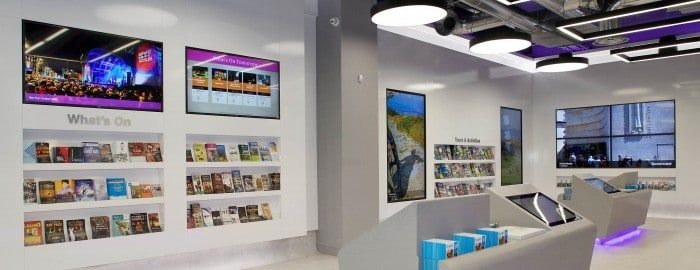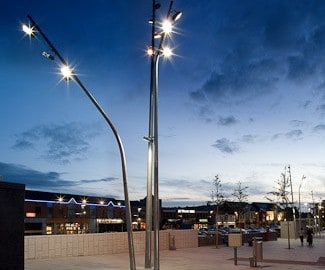-
Irish Aviation Authority Vertical Control Tower
The tallest occupied structure in Ireland is the IAA Vertical Control Tower designed by Scott Tallon Walker Architects. It encapsulates the heroic symbolism of many aviation buildings. The tower stands at 87.7m over the surrounding hinterland. Its profile is slender with an occupied control center at the top. The structure is reminiscent of the many emblematic aviation buildings. The original Dublin Airport buildings designed in the 1930’s by Desmond FitzGerald. It is designed as a curved building with tiered floor levels is reminiscent of ocean liners, the design conveys the excitement and luxury of flight in the thirties and forties.
Many airport buildings romanticize flight and travel. The architecture of flight symbolizes technological advancement. Think of Eero Saarinens 1962 TWA Flight Centre in New York. Saarinens’ building pioneers the use of thin shell concrete construction. The roof mirrors a wing profile. The message is clear, technology conquers all. Norman Fosters Stansted airport is another example. Stansted is masterpiece of rigorous architectural logic. Every component delivers an automated solution to enable huge numbers of people travel with belongs to every corner of the globe.
The vertical control tower continues in that tradition. It is a white shining torch to greet visitors.
The simple architectural expression masks quite complex engineering. Arup Structural engineers provided the engineering design for the project. The tower used a tuned mass damper reduce the sway in the structure. The damper is, in essence, like a pendulum. The natural sway of the building due to wind is counteracted by the damper. The damper allows the structure to remain slender, elegant and stable.
From a photographic stance the project required planning and a knowledge of airport operations. This experience had been gained from working with the Dublin Airport Authority and other organizations with specialist security and health and safety requirements.
The project has deservedly won numerous awards and is a significant addition to the landscape of Dublin.
-
Farranboley Tri House
The Urban Agency House Fro Enda Loughman was featured in today’s Irish Times. The house is proposes a model for increasing the density of the suburbs by using back gardens of existing houses. The triangular shape of the site generated the triangular plan form. The edges are carved out to create access and enhance the usable space inside. More detail can be seen on the Irish Times and Urban Agency. Irish Times
https://www.irishtimes.com/life-and-style/homes-and-property/a-cute-angle-film-director-uses-3-d-imaging-to-design-unusual-garden-home-1.3917124
Urban Agency
-
Portmarnock Passive House
Passive house plus ( a really excellent magazine) recently published some images of a passive house by OA studios in Portmarnock. The Architectural Technologist and designer Des Crabbe explains the design and construction of the house in the lastest edition of Passive house Plus (issue 23). The images turned out well showing panoramic views of Lambay island and the sea. The house is constructed of clay blocks. The contractors were Pannocelt ltd. For information of green technology , passive house and good coverage of construction and the environment Passive house Plus is highly recommended.
More details can be found in Passive house Plus
https://www.pannoncelt.com/
http://www.oastudios.ie/
https://passivehouseplus.ie/
-
Visit Dublin Architectural Photography
Architectural photography for Visit Dublin on Suffolk street. Visit Dublin on suffolk street is a visitor centre for tourists. The centre provides information for all those interested in finding out about Dublin. It also offer some information of tours outside of Dublin and in the rest of Ireland. Its primary focus is on Dublin City and the greater Dublin Area. The photography shows of the space completed recently as part of a commercial fit-out contract. The design is clean and spacious with the multiple display screens used to create a bright and vibrant environment.
-
Urban Design photography Paul Keogh Architects
Photography of urban design of the public spaces in naval by Paul Keogh Architects www.pka.ie
The civic space creates a raised shared surface to an urban squar. The central area features local limestone, granite details, and specially selected lighting to illuminate the space. The space also featured a small market stall shown about. The square is a significant enhancement of the existing urban fabric, the architectural vocabulary is simple and clear, it amplifies the social environment and enhances the existing vernacular design in a subtle manner.





